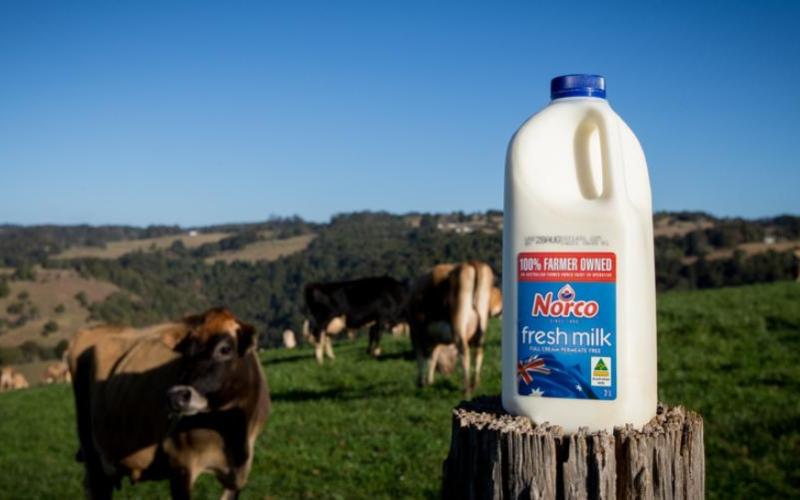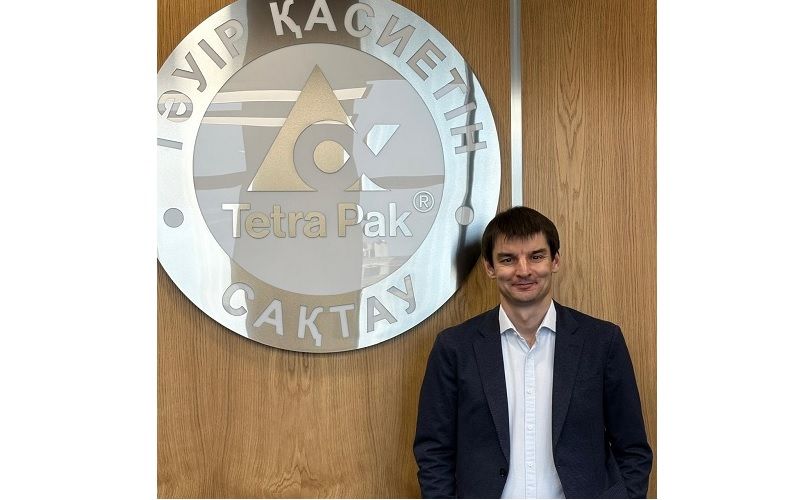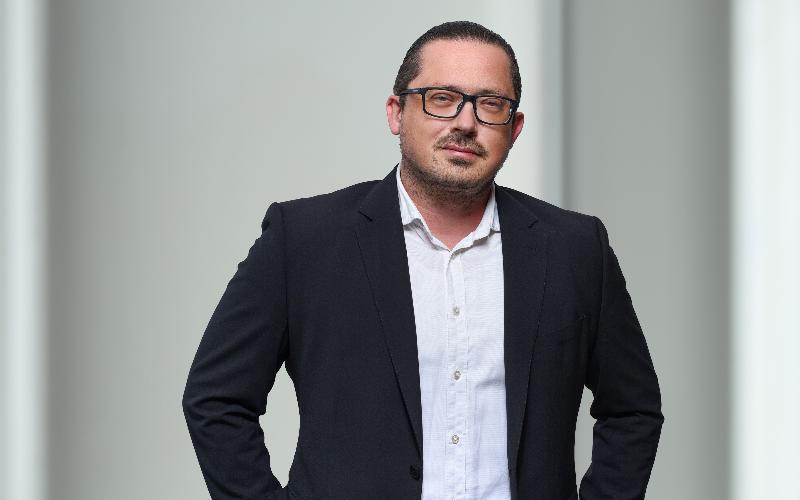Only technology can change the situation with livestock farming for the better - Mikhail Mishchenko
Source: The DairyNews
Mikhail Mishchenko, director of the Dairy Market Research Center (DIA), spoke about the situation in the dairy industry of Central Asia and the world at the international exhibition AgroExpo Uzbekistan, which was held from November 29 to December 1, 2023 in Tashkent, Uzbekistan, TheDairyNews reports.

Today in the world there is a tendency to increase the production of milk of all types, said Mikhail Mishchenko. Global production reached 992 million tons. The growth in milk consumption was also influenced by the Covid-19 pandemic.
“During the Covid period, people from different countries stayed at home, and domestic milk consumption increased rapidly. However, later the figures for milk consumption and production began to grow at a slower rate due to various situations in the world,” the expert said.
He noted that the production of cow's milk in the world today is about 460 million tons - 2 times less. All developed countries have a marketability of at least 90%. And the non-commodity sector is formed by Asian countries. Now the largest dairy production in the world is located in China.
“The share of non-marketable milk production is very high in the Asian part of the world. Russia officially talks about production of 32 million tons, but currently produces only 21 million tons. According to statistics, Uzbekistan produces 11 million tons of milk, in reality - about 4 million tons. In Kazakhstan, the official figure is 6.3 million tons, in reality it is 1.8 million tons. The same situation is observed in India. They produce 160 million tons of milk, but the production itself is informal, they do not export, but import a lot of substitutes, plant components, etc. Despite expert data that milk production in India will increase, I personally doubt it,” said Mikhail Mishchenko.
Based on Rabobank data, the expert explained that milk consumption depends on two factors - population size and per capita consumption.
“Both of these factors have a certain effect. The two most powerful examples are China and the United States. The influence of the population in China on milk consumption is negative. By 2030, the population there will decrease, while milk consumption will increase. And in the US, per capita consumption and numbers will grow. You need to understand that the States are one of the main drivers, and they will influence the growth of milk consumption in the world,” commented Mikhail Mishchenko.
Rabobank research also predicts an increase in milk consumption as the world ages, he said.
“In China, the number of people under the age of 20 will decrease by 60 million, and the number of people over 60 will increase by 100 million. In addition, there is a low birth rate in the EU and the USA. These countries will consume more food to support the active life and longevity of older generations. And they need milk protein for this,” explained Mikhail Mishchenko.
Then the expert spoke about the impact of population on milk shortages and surpluses in Central Asian countries.
“71 million people live in Central Asia. This, of course, is not India or China, but it is a large market and a scarce market. Only in the north of Kazakhstan is milk produced slightly in surplus; there is only enough milk for Astana and Karaganda. This milk is no longer enough for the south. And today the milk deficit in Kazakhstan is 2.2 million tons. In Uzbekistan, the milk deficit is approximately 4 million tons. Kyrgyzstan is the most democratic country; there are no subsidies for producers at all, but there is a surplus. On an average farm there are no more than 10 animals. In Kyrgyzstan, a farm with 50 animals is considered large. At the same time, the country has its own factories, drying facilities, and cheese production. They supply their milk to the southern regions of Kazakhstan,” the expert said.
The DIA director is confident that in the future the population of Central Asian countries will grow, and in the long term this will have a positive impact on the economy of the region.
Mikhail Mishchenko also shared an interesting study. According to him, today the consumer in developed countries eats milk more than drinks it - and the entire industry is moving towards this. If milk was once a drinkable product, today it is becoming the main ingredient in the food industry.
“In New Zealand, which is shrinking the milk production market, milk has long been measured not in liters, but in tons of solids. That is, they only count what they were able to extract from this milk, and do not take into account the water at all. Another story is Japan. There milk is produced only on the island of Hokkaido. Milk production in Japan is negative. The main factor is that people do not want to engage in animal husbandry. When people live comfortably, well, they do not want to engage in animal husbandry. In addition, it is easier to buy ingredients from the same America and New Zealand, which easily supply them across the ocean. As a result, the Japanese are less and less involved in livestock farming: the number of farms, farmers and milk in the country is decreasing,” the expert said.
Mikhail Mishchenko shared statistics on livestock volumes in different countries of the world. There is an opinion that the future lies with large commercial dairy farms, but the expert does not agree with this.
“In the US, 55% of farms have up to 50 cows. Another 30% have from 50 to 200 heads. Accordingly, 85% of US farms have fewer than 200 cows. The USA, with only 9.4 million cows, produces 100 million tons of raw milk per year. Thus, despite the small number of herds on farms, the country is an efficient producer of raw milk in the world.
Yes, large farms are cool, but you need to understand that agriculture is animal husbandry, and for many people it is a way of life. And when large companies come and begin to break this way of life, this is wrong,” says Mikhail Mishchenko.
The expert also shared research by TetraPak in collaboration with a Swedish university. According to the research results, the dairy industry is influenced by technological development and socio-ecological factors, which is especially noticeable in Europe. Thus, taking these factors into account, the global dairy industry could reduce cow's milk production by up to 20% by 2030. To avoid this, the speaker considers it important to introduce digitalization in milk production.
“Livestock farming is the most difficult type of business. The main goal of digitalization is the complete elimination of human labor. We must use technology in animal husbandry. This is very important, without this there will simply be no livestock farming. Today it is under intense pressure. Livestock farming is an unsustainable business, so only technology can change the situation for the better,” concluded Mikhail Mishchenko.
Download presentation by Mikhail Mishchenko
“During the Covid period, people from different countries stayed at home, and domestic milk consumption increased rapidly. However, later the figures for milk consumption and production began to grow at a slower rate due to various situations in the world,” the expert said.
He noted that the production of cow's milk in the world today is about 460 million tons - 2 times less. All developed countries have a marketability of at least 90%. And the non-commodity sector is formed by Asian countries. Now the largest dairy production in the world is located in China.
“The share of non-marketable milk production is very high in the Asian part of the world. Russia officially talks about production of 32 million tons, but currently produces only 21 million tons. According to statistics, Uzbekistan produces 11 million tons of milk, in reality - about 4 million tons. In Kazakhstan, the official figure is 6.3 million tons, in reality it is 1.8 million tons. The same situation is observed in India. They produce 160 million tons of milk, but the production itself is informal, they do not export, but import a lot of substitutes, plant components, etc. Despite expert data that milk production in India will increase, I personally doubt it,” said Mikhail Mishchenko.
Based on Rabobank data, the expert explained that milk consumption depends on two factors - population size and per capita consumption.
“Both of these factors have a certain effect. The two most powerful examples are China and the United States. The influence of the population in China on milk consumption is negative. By 2030, the population there will decrease, while milk consumption will increase. And in the US, per capita consumption and numbers will grow. You need to understand that the States are one of the main drivers, and they will influence the growth of milk consumption in the world,” commented Mikhail Mishchenko.
Rabobank research also predicts an increase in milk consumption as the world ages, he said.
“In China, the number of people under the age of 20 will decrease by 60 million, and the number of people over 60 will increase by 100 million. In addition, there is a low birth rate in the EU and the USA. These countries will consume more food to support the active life and longevity of older generations. And they need milk protein for this,” explained Mikhail Mishchenko.
Then the expert spoke about the impact of population on milk shortages and surpluses in Central Asian countries.
“71 million people live in Central Asia. This, of course, is not India or China, but it is a large market and a scarce market. Only in the north of Kazakhstan is milk produced slightly in surplus; there is only enough milk for Astana and Karaganda. This milk is no longer enough for the south. And today the milk deficit in Kazakhstan is 2.2 million tons. In Uzbekistan, the milk deficit is approximately 4 million tons. Kyrgyzstan is the most democratic country; there are no subsidies for producers at all, but there is a surplus. On an average farm there are no more than 10 animals. In Kyrgyzstan, a farm with 50 animals is considered large. At the same time, the country has its own factories, drying facilities, and cheese production. They supply their milk to the southern regions of Kazakhstan,” the expert said.
The DIA director is confident that in the future the population of Central Asian countries will grow, and in the long term this will have a positive impact on the economy of the region.
Mikhail Mishchenko also shared an interesting study. According to him, today the consumer in developed countries eats milk more than drinks it - and the entire industry is moving towards this. If milk was once a drinkable product, today it is becoming the main ingredient in the food industry.
“In New Zealand, which is shrinking the milk production market, milk has long been measured not in liters, but in tons of solids. That is, they only count what they were able to extract from this milk, and do not take into account the water at all. Another story is Japan. There milk is produced only on the island of Hokkaido. Milk production in Japan is negative. The main factor is that people do not want to engage in animal husbandry. When people live comfortably, well, they do not want to engage in animal husbandry. In addition, it is easier to buy ingredients from the same America and New Zealand, which easily supply them across the ocean. As a result, the Japanese are less and less involved in livestock farming: the number of farms, farmers and milk in the country is decreasing,” the expert said.
Mikhail Mishchenko shared statistics on livestock volumes in different countries of the world. There is an opinion that the future lies with large commercial dairy farms, but the expert does not agree with this.
“In the US, 55% of farms have up to 50 cows. Another 30% have from 50 to 200 heads. Accordingly, 85% of US farms have fewer than 200 cows. The USA, with only 9.4 million cows, produces 100 million tons of raw milk per year. Thus, despite the small number of herds on farms, the country is an efficient producer of raw milk in the world.
Yes, large farms are cool, but you need to understand that agriculture is animal husbandry, and for many people it is a way of life. And when large companies come and begin to break this way of life, this is wrong,” says Mikhail Mishchenko.
The expert also shared research by TetraPak in collaboration with a Swedish university. According to the research results, the dairy industry is influenced by technological development and socio-ecological factors, which is especially noticeable in Europe. Thus, taking these factors into account, the global dairy industry could reduce cow's milk production by up to 20% by 2030. To avoid this, the speaker considers it important to introduce digitalization in milk production.
“Livestock farming is the most difficult type of business. The main goal of digitalization is the complete elimination of human labor. We must use technology in animal husbandry. This is very important, without this there will simply be no livestock farming. Today it is under intense pressure. Livestock farming is an unsustainable business, so only technology can change the situation for the better,” concluded Mikhail Mishchenko.
Download presentation by Mikhail Mishchenko














